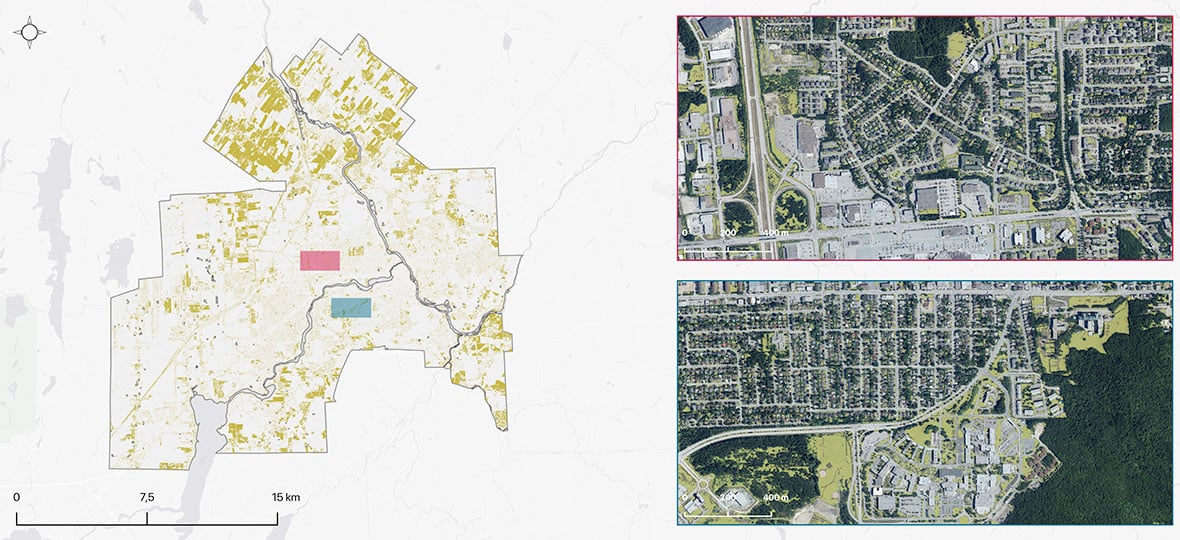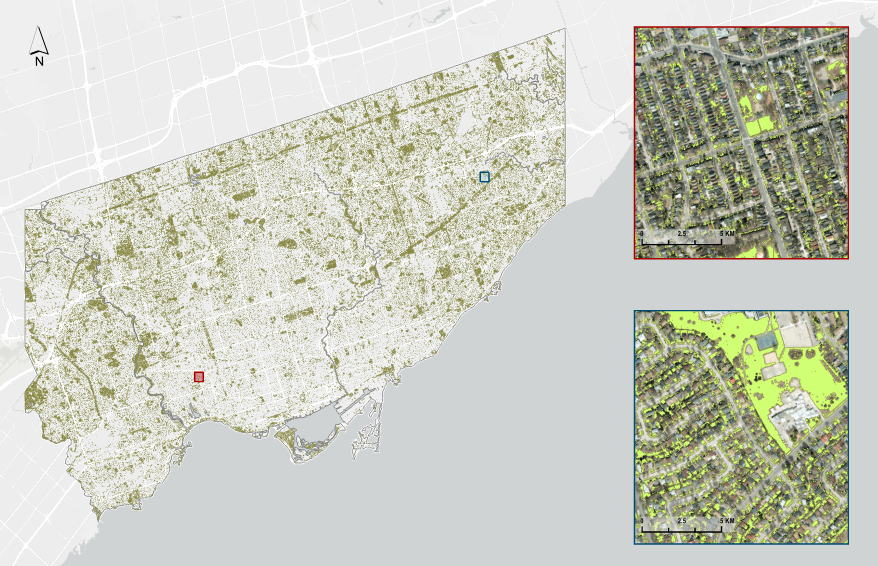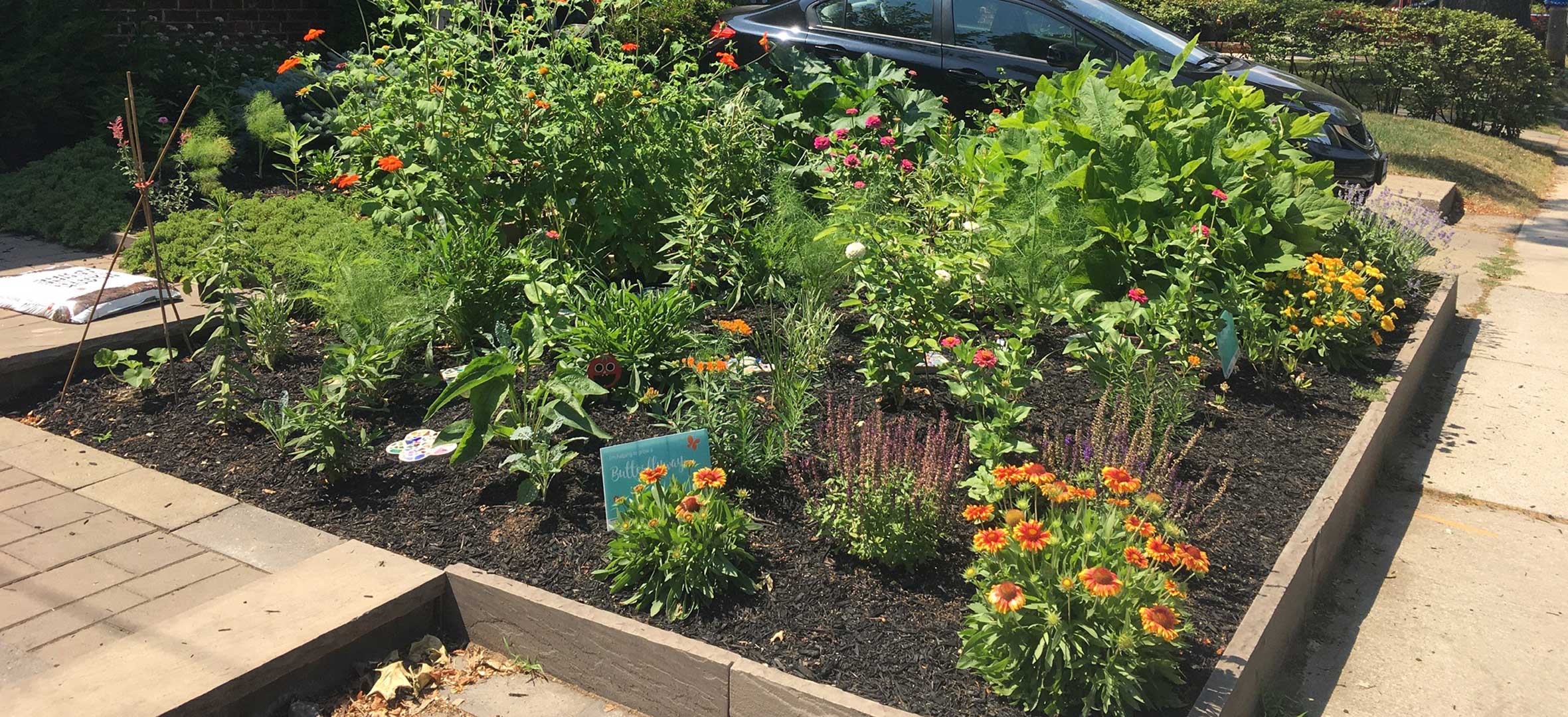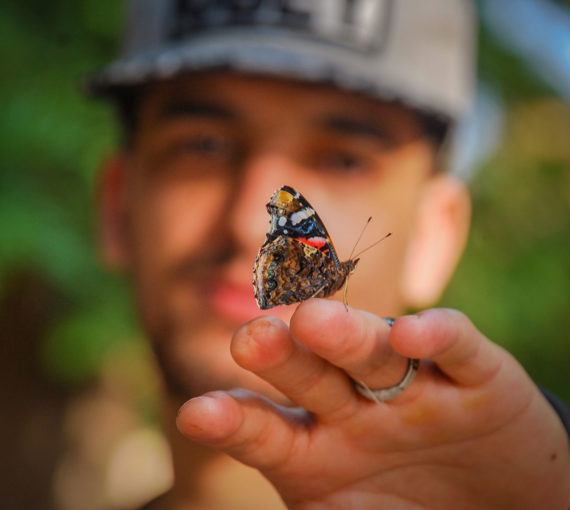Introducing LawnShare!
Traditional ornamental turfgrass lawns are one of the most prominent landscapes in Canadian towns and cities — so “normalized” that some people can’t imagine any alternative. Although they play an important role in outdoor recreation and leisure, thirsty lawns use vast amounts of water and harmful chemicals, take up precious space and provide little ecological value. LawnShare, and it’s French-language partner campaign Partage ta pelouse, aims to change the way people care for lawns and help create much-needed habitat — sharing these spaces with local insects, plants and other wildlife.
We want to support households, agencies and companies to change the way they care for lawns, and help thousands of people in Canada reimagine these spaces as habitat. LawnShare participants will receive simple guidance on how to take care of lawns with fewer impacts on local water, air and soil, and on how to transform these spaces into habitat that supports native plants and other wildlife while saving time and money.
LawnShare Goals:
- Reduce water, fertilizer and pesticide use
- Create less noise, air, soil and water pollution
- Support native plants and animals
- Establish new relationships with nature
Why Traditional Lawns Need to be Turfed:
- Lawn watering accounts for nearly one-third of all residential water use in the U.S. [U.S. Environmental Protection Agency]
- Americans apply more than 70 million pounds (32 million kilograms) of lawn pesticides each year [National Resources Defense Council]
- Homeowners use up to 10 times more pesticides per acre than agricultural crops [U.S. Fish and Wildlife Service]
- Nearly one in four native bee species in North America is imperilled [Center for Biological Diversity]
- Frequent lawn mowing is associated with increased “pest” invasions [Journal of Applied Ecology]
Landscapes of Opportunity:
- Almost three-quarters of land in most Canadian communities is green space [Statistics Canada]
- Converting as little as 10 per cent of residential lawns and public green space to habitat-supporting vegetation could significantly aid insect conservation [National Academy of Sciences]
- A modest reduction in mowing frequency can save 36 per cent of costs [Journal of Applied Ecology]
- Replacing traditional lawns with natural meadow landscaping can dramatically reduce maintenance costs [Xerces Society]
The LawnShare Toolkit
For too long, conventional turfgrass lawns have dominated our communities, yet their ecological impact often goes unnoticed. These lawns come with steep environmental costs, including excessive water usage, chemical reliance and minimal ecological value. LawnShare seeks to change this narrative by promoting sustainable alternatives that support native flora and fauna.
To help you transform your lawn, we have developed a downloadable toolkit that outlines best practices for existing lawns, from mowing and watering to overseeding and soil feeding. If you’re looking to transform lawn into habitat — from a small strip to the entire yard — you’ll get simple tips and suggestions for alternative seed mixes and native plants that will turn your lawn into a vibrant and healthy space for local insects and other wildlife.
Unlock the untapped potential of your lawn and create healthier ecosystems. Join the LawnShare campaign today and be a part of the movement for sustainable and biodiverse communities.
Get the LawnShare toolkit!
Canada’s largest irrigated crop?
Turfgrass lawns have long been one of the most common landscapes in our communities. In the U.S., lawns are the “largest irrigated crop,” covering more area than corn and canola. No one has yet mapped all of Canada’s lawns — though there are millions, on private and public lands.
Mapping lawns, one community at a time
One of LawnShare’s main goals is to develop a simple, easy-to-copy way of identifying the location of lawns in different Canadian municipalities.
Using digital satellite images, our research team has developed a method for calculating the amount of land covered by lawns in Canadian cities. Documenting and mapping lawns will help identify local conservation opportunities.
How many lawns are there?
The initial research involved mapping lawns in seven municipalities, based on data accessibility, diversity in size and regional ecology. Using digital aerial images and LiDAR-derived products (data collected by light detection and ranging technology), preliminary findings suggest a range of 8.2 to 22.7 per cent of the seven mapped communities are turfgrass.
Lawn area (as percentage of total area and total area)
Sherbrooke: 8.2 per cent (28.9 km2)
Hamilton 8.4 per cent (9.6 km2)
Saint-Jérôme: 13.0 per cent (11.8 km2)
Toronto: 13.4 per cent (79.6 km2)
Laval: 14.7 per cent (35.5 km2)
Montreal: 19.5 per cent (96.5 km2)
Collingwood: 22.7 per cent (6.5 km2)
These calculations account for areas with low vegetation (less then 30 centimetres) in private and public lands, excluding agricultural and forested lands.
To put these areas into perspective, the heavily urbanized City of Toronto has 79.6 square kilometres of lawns — 50 times bigger than High Park, one of the city’s largest green spaces. Montreal’s 96.5 square kilometres represents an area about 43 times bigger than Mount Royal Park. For an in-depth summary of the Quebec mapping methodology and result, check out the Partage ta pelouse report [in French].
About the Campaign
LawnShare and Partage ta Pelouse began as a collaboration between the David Suzuki Foundation, Nouveaux Voisins and Dark Matter Labs. If you’re part of a group or institution interested in joining the campaign as a partner, please email contact@davidsuzuki.org.













